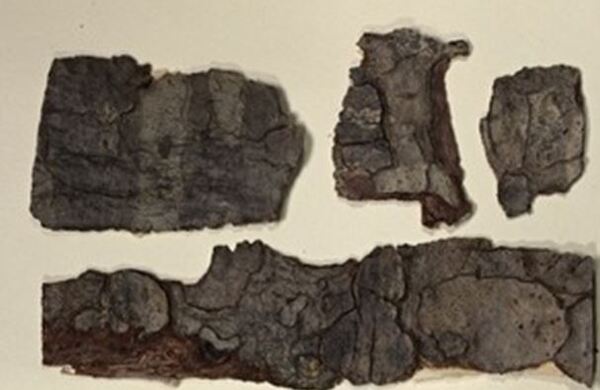Arthonia subastroidea Anzi
Comm. Soc. Critt. Ital., 2, 2: 22, 1864.
Synonyms: Arthothelium subastroideum (Anzi) Rehm
Distribution: N - Lomb (Sundin 1999).
Description: Thallus crustose, endosubstratic and poorly evident, forming discoloured patches on the bark, sometimes delimited by a black prothalline line. Apothecia arthonioid, immarginate, black, epruinose, elongate, <0.7 x <0.2 mm, semi-sessile, mostly flat. Proper exciple very poorly developed; epithecium grey-brown; hymenium colourless, I+ blue, K/I+ blue; paraphysoids branched and anastomosing; hypothecium colourless. Asci 8-spored, broadly clavate to ovoid, semi-fissitunicate, with a large apical dome and a distinct ocular chamber, the apex with a K/I+ blue, elongated ring structure and paler bluish tholus flanks, Arthonia-type. Ascospores muriform, with 7-9 transverse septa and (0-)1-4 longitudinal septa, at first hyaline, then turning brown, ellipsoid, (21-)23-29(-35) x (7-)9-12(-15) μm, with a K/I+ blue epispore. Photobiont absent. Spot tests: K-, C-, KC-, P-. Chemistry: without lichen substances.Note: a cool-temperate to boreal-montane early coloniser of smooth bark, e.g. of Pinus cembra and Fagus in the Alps. Perhaps non-lichenised. It is included in the Italian red list of epiphytic lichens as “Endangered” (Nascimbene & al. 2013c).
Growth form: Crustose
Substrata: bark
Photobiont: Trentepohlia
Reproductive strategy: mainly sexual
Pioneer species
Commonnes-rarity: (info)
Alpine belt: absent
Subalpine belt: very rare
Oromediterranean belt: absent
Montane belt: very rare
Submediterranean belt: absent
Padanian area: absent
Humid submediterranean belt: absent
Humid mediterranean belt: absent
Dry mediterranean belt: absent

Predictive model
Growth form: Crustose
Substrata: bark
Photobiont: Trentepohlia
Reproductive strategy: mainly sexual
Pioneer species
Commonnes-rarity: (info)
Alpine belt: absent
Subalpine belt: very rare
Oromediterranean belt: absent
Montane belt: very rare
Submediterranean belt: absent
Padanian area: absent
Humid submediterranean belt: absent
Humid mediterranean belt: absent
Dry mediterranean belt: absent

Predictive model
 Index Fungorum
Index Fungorum
 GBIF
GBIF


